The art that made me: Michael Johnson
In The art that made me, artists discuss works in the Art Gallery of New South Wales collection that either inspire, influence or simply delight them.
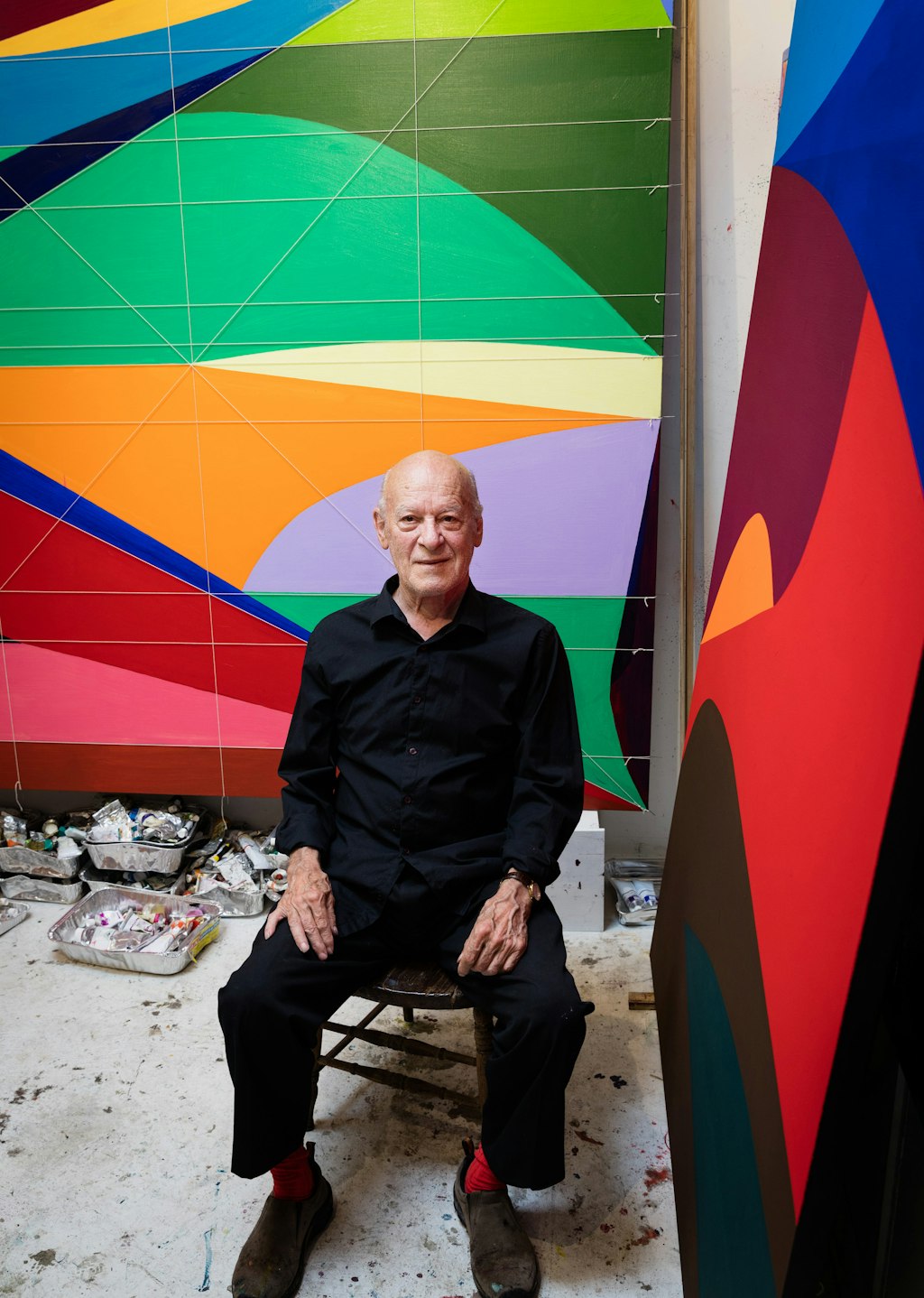
Michael Johnson, photo © Tony Lopes
Michael Johnson, photo © Tony Lopes
‘My earliest memories of paintings are still my most formative,’ Michael Johnson reflects. ‘My mother, Beatrice, hung up a nocturnal seascape by Albert Pinkham Ryder in the kitchen and a print by Johannes Vermeer. Both my parents were artists so I started early.’
By 16 Johnson was a full-time illustrator for magazines, while expanding into his own work in a backyard studio in Mosman on Sydney’s North Shore.
‘In those days, the harbour was a haven for artists. I haunted the foreshores where Arthur Streeton and Tom Roberts painted but I also met up with kindred spirits on the daily ferry. The Art Gallery was also a meeting place in the 1950s, even before Ralph Balson or Giorgio Morandi landed in the collection. I never missed an Archibald and I often nipped into the Gallery to concoct a better composition for the magazines. Bailed up [1895, 1927] by Tom Roberts always turned my head.’
Maturing into one of Australia’s boldest colourists, Johnson won the 2014 Wynne Prize with his large-scale abstract painting Oceania high low and in late 2019 completed the largest work of his life: Ellamatta, a triple-panelled six-metre-high mural in oil, for Paramatta Square in Sydney’s west. The COVID pandemic subdued the launch of this milestone work, yet Johnson paints on, working in his Redfern studio six days a week. Surrounded by gestural oils and small colour studies, the compact space is a pigment laboratory built on seven decades of experience. ‘Visual memory is like a tide returning upon itself. I never forget a picture,’ he says, as he turns his attention to six works of art that have influenced him.
Grace Cossington Smith The sock knitter 1915

Grace Cossington Smith The sock knitter 1915, Art Gallery of New South Wales © Estate of Grace Cossington Smith
Grace Cossington Smith The sock knitter 1915, Art Gallery of New South Wales © Estate of Grace Cossington Smith
Cossington Smith was my mother’s favourite artist. For me she was the introduction to all of the key women artists that tended to be ignored by the canon. This painting is compositionally radical. I love the balance of the cool and warm colours and the tension generated by asymmetry. The structure is dynamic and the colour is absorbing. I mean, Jesus Christ, look at the reds under the blues. Cossington Smith is such a decisive painter. The intelligence in this work is a quiet subject fused to experimental ideas. I’ve never seen a sewing bag with that much punch.
Rover Thomas Ngarin Janu Country c1988
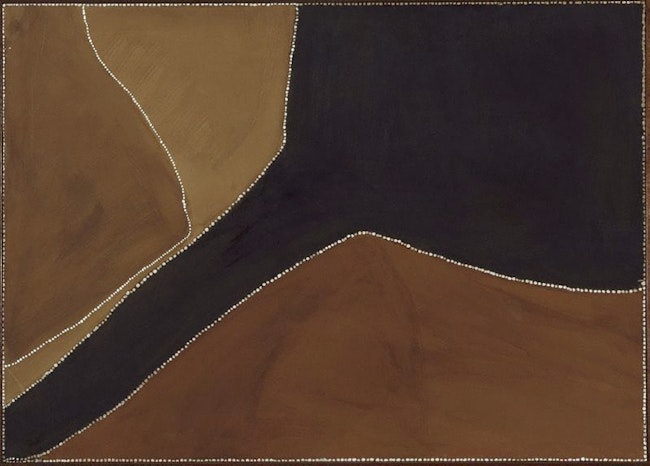
Rover Thomas Ngarin Janu Country c1988, Art Gallery of New South Wales © Estate of Rover Thomas, courtesy Warmun Art Centre / Copyright Agency
Rover Thomas Ngarin Janu Country c1988, Art Gallery of New South Wales © Estate of Rover Thomas, courtesy Warmun Art Centre / Copyright Agency
As a boy I searched the foreshores for rock carvings with my brother Chris, yet I came to Aboriginal painting quite late. When I’d done the cycle of the planet Rover Thomas was still so little known. The first time I saw his paintings [at the Art Gallery] I related to the yin–yang interlocking tension between forms, and the richness of his palette. Each colour is its own entity. I still admire his use of black; it never sinks, instead it is deep and fathomless.
Tony Tuckson Five white lines (vertical), black ground 1970–73

Tony Tuckson Five white lines (vertical), black ground 1970–73, Art Gallery of New South Wales © Estate of Tony Tuckson / Copyright Agency
Tony Tuckson Five white lines (vertical), black ground 1970–73, Art Gallery of New South Wales © Estate of Tony Tuckson / Copyright Agency
Tuckson’s calligraphy was a dance. I went to his studio and it was like a poetic workshop. In many ways he felt like a contemporary even though he was older. I felt an immediate affinity with his minimalism and his drawing. In Five white lines the white ventilates the black, the monochromes hold their own. Tuckson mounted a show at the Gallery of totems and I think his work was influenced by verticality, the power of the upward line. He was such an original, he had access to all the international catalogues, yet never followed other artists. I respect the awkward honesty of his hand.
Ian Fairweather Chinese mountain 1933
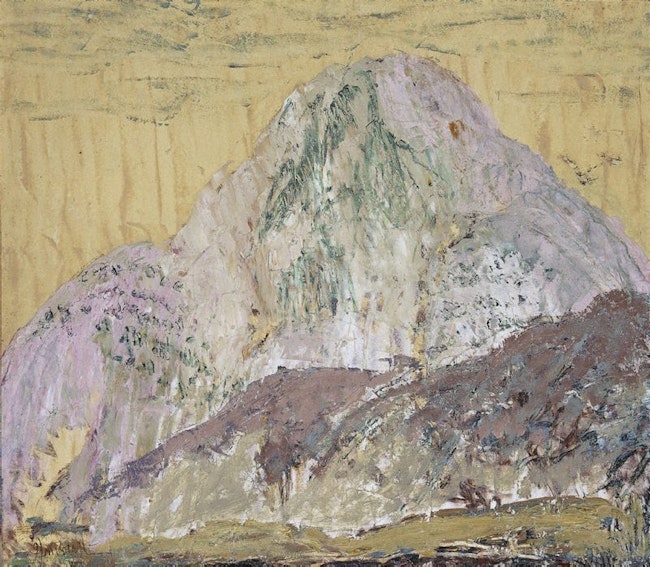
Ian Fairweather Chinese mountain 1933, Art Gallery of New South Wales © Estate of Ian Fairweather / DACS / Copyright Agency
Ian Fairweather Chinese mountain 1933, Art Gallery of New South Wales © Estate of Ian Fairweather / DACS / Copyright Agency
Fairweather has a mythical presence. From the first time I saw his work, I felt like he was family, like I belonged to his tribe. I’ve been very influenced by Fairweather with regard to calligraphy and his connection to Asian art. As kids, he was our hero and we never missed a show. I love his opacity. The palette in this painting is transparent yet monolithic; the pale grey and yellow is ethereal. His rarity dwells in the fact that his touch is uniquely his. Fairweather rejected materialism and it shows. His solitude seeps into the atmosphere of his work. It is rare.
Ralph Balson Construction in green 1942
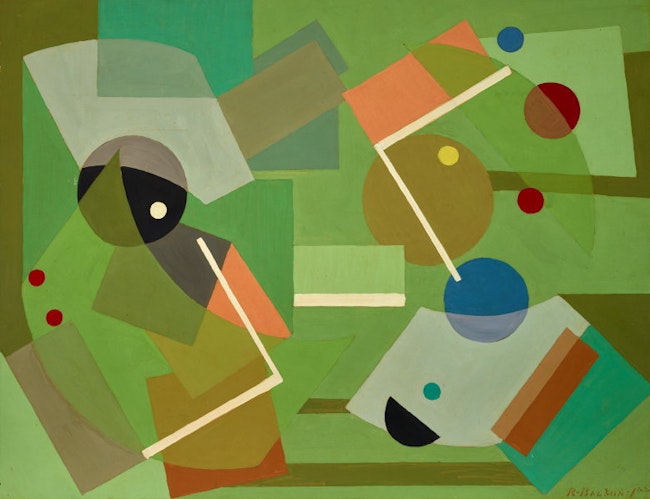
Ralph Balson Construction in green 1942, Art Gallery of New South Wales © Ralph Balson Estate
Ralph Balson Construction in green 1942, Art Gallery of New South Wales © Ralph Balson Estate
Balson went unrecognised in his lifetime and was revived in the early 1960s when his work was shown at Gallery A in Paddington, where I also showed. I was onto him as a rare talent. In this painting the colour breathes. The beautiful thing is the floatation of circles, triangles and diagonals. The dynamics of his works are amazing even without colour. A key basis of minimal abstraction is maths and geometry. Balson inspired me with his structure and use of space. That and the fact this painting is green. Green paintings are hard work.
Lloyd Rees The road to Berry 1947
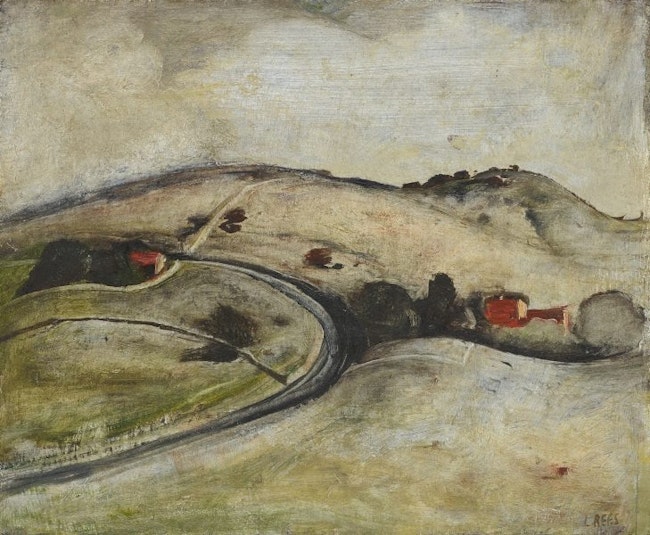
Lloyd Rees The road to Berry 1947, Art Gallery of New South Wales © A&J Rees / Copyright Agency
Lloyd Rees The road to Berry 1947, Art Gallery of New South Wales © A&J Rees / Copyright Agency
At about 17 I worked with Brett Whiteley at Lintas. During our lunch hour we would always end up in front of this painting. Rees was our hero and this work influenced us in different ways. Brett painted a homage in 1985. For me that swell and concave in the landscape inspired my minimal hard-edged work in the 1960s. Sofala, painted in 1965, drew on this curve. Rees was a great draftsman teacher. At life drawing he would grind, scrub and hack into the paper. He should have been a sculptor! He was also so experimental with his paint, I was fascinated by his ragging. His touch softened the void.
A version of this article first appeared in Look – the Gallery’s members magazine